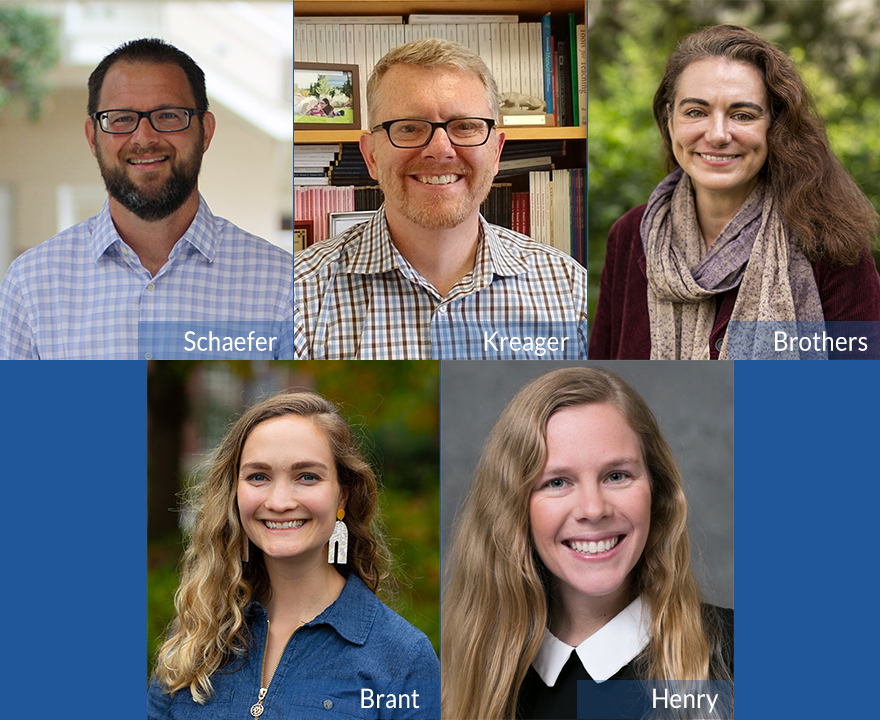How do formerly incarcerated individuals navigate community reentry?

How do formerly incarcerated individuals navigate community reentry?
- November 19, 2024
- UC Irvine sociologist David Schaefer and Penn State researchers collaborate on National Institute on Aging-funded study
-----
Fifty years of punitive criminal justice policies have created a growing population of older incarcerated individuals who are now eligible for community release but lack the social or economic capital to rebuild their lives, according to a team of researchers from Penn State and the University of California, Irvine.
Now, that team will examine how formerly incarcerated individuals form networks upon their release from prison and how such relationships help with navigating reentry back into the community.
The team, co-led by Derek Kreager, associate head of the Penn State department of sociology and criminology, and David Schaefer, UC Irvine sociology professor, recently received a one-year, $328,000 grant from the National Institutes of Health’s National Institute on Aging (NIA) to specifically study a reentry program for older men transitioning from long-term prison sentences back into their communities.
The project originally developed from seed funding from the Social Science Research Institute at Penn State, which allowed the researchers to study the Cumberland House Reentry Program’s development and delivery from its inception. The Cumberland House Reentry Program is the first of its kind, departing from traditional community corrections programs by immersing older, previously incarcerated men into a peer-run house designed to build and enhance peer and community social ties.
“Traditionally, the criminal justice system does not want formerly incarcerated individuals to be around similar peers because there’s a persistent belief that they will negatively influence one another and reoffend,” said Kreager. “However, research shows that older former incarcerated men are less likely to go back to crime and would strongly benefit from the help of peers. The Cumberland House provides a peer safety net while they navigate reentry.”
The study will take a mixed-methods social networks approach, combining qualitative and quantitative data from interviews, surveys, and administrative data. The team will collect both dynamic network data of house residents and staff, and qualitative data related to health and interpersonal relationships. They will then analyze the effectiveness of the program and determine whether it would translate into realistic future network interventions.
A major component of the team’s research design – led by co-PI Schaefer – will involve social network analysis in which the researchers will map individual and group social networks, determining how house residents connect with one another and others outside the house for social support.
“We’re hoping to create a full story through using interviews and social network analysis to figure out how relationships develop and why they may change over time,” said Schaefer. “We’re asking people if they’re worried about this relationship or that relationship, or who is helping them navigate finding jobs or reconnecting with their families? There’s a lot of questions that are untested here, so we’re eager to see how things change over time.”
The team also includes Penn State faculty members, Sarah Brothers, assistant professor of sociology and public policy; Brandy Henry, assistant professor of education; and Kristina Brant, assistant professor of rural sociology. Brothers, who is trained in ethnography, will study the group directly and watch in real-time as they interact with each other and the community. Henry’s role focuses on the health component of the study and will conduct interviews with the staff. Brant will conduct interviews and work with Brothers on understanding the men’s experiences.
Researchers hope the project will have a long-term benefit to the community because studies about peer-led interventions in criminal justice are rare and understudied.
“This may provide insight into future interventions, especially as it relates to health and other reentry outcomes like employment,” said Kreager. “We’re eager to see if this is something that can be replicated in other communities and how communities might respond to this type of intervention as well.”
-courtesy of Melissa Krug, Penn State; adapted with permission from https://www.psu.edu/news/social-science-research-institute/story/how-do-formerly-incarcerated-individuals-navigate-community
-----
Would you like to get more involved with the social sciences? Email us at communications@socsci.uci.edu to connect.
Share on:
Related News Items
- Careet RightUCI sociologists earn American Sociological Association honors, leadership roles
- Careet RightMultiple honors for UCI soc sci's Maricela Bañuelos
- Careet RightA lesson in solidarity
- Careet RightUCI sociologists are making their mark
- Careet RightNew program allows incarcerated students to get bachelor's degrees alongside peers on the outside


